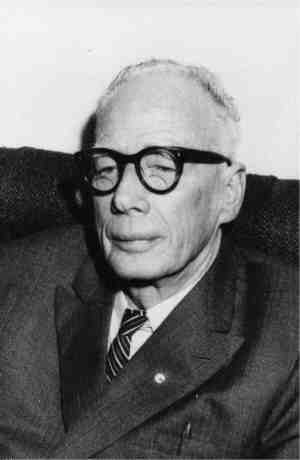George Arthur Davies
- Born: 5 Jun 1894, Corrimal, Wollongong, NSW Australia
- Marriage (1): Margaret Helen (Nell) Nicol on 19 Jun 1920 in Methodist Church, Arncliffe, Sydney, NSW Australia
- Died: 23 Apr 1976, Concord Repatriation Hospital, Sydney, NSW Australia at age 81
- Buried: 27 Apr 1976, was cremated at Woronora Crematorium, Sutherland, NSW Australia Crematorium Area HH, Rose Garden 4, #070
General Notes:
Originally he was a miner but commenced a printing business in 1919. This business became known as G.A. Davies Pty Ltd and operated at King Street Syndey, then Sussex St Sydney and later at Marrickville
Was awarded a Distinguished Conduct Medal for "conspicious gallantry and devotion to duty near Polygon Wood, France 26/28 September, 1917. George Arthur Davies was in the 14th Field Ambulance Corps.
Married by Rev RJ Williams at Arncliffe Methodist Church
Lived at "Thurella" 24 Gipps St Arncliffe for most of married life
source: & Ken Shiels [shiel_genealogy@austarnet.com.au] who notes:
Notes for GEORGE ARTHUR DAVIES:
George was also the Church organist.
Name: George Arthur DAVIES
Regimental number: 172
Religion: Methodist
Occupation: Printer
Address: 369 Elizabeth Street, Sydney, New South Wales
Marital status: Single
Age at embarkation: 20
Next of kin: Joseph Davies, Mt Keira, Wollongong, New South Wales
Previous military service: 7th Australian Army Medical Corps
Enlistment date: 24 August 1914
Rank on enlistment: Corporal
Unit name: 1st Field Ambulance, C Squadron
AWM Embarkation Roll number: 26/44/1
Embarkation details: Unit embarked Sydney, on board Transport A14 Euripides on 20 October 1914
Rank from Nominal Roll: Sergeant
Unit from Nominal Roll: 14th Field Ambulance
Recommendations (Medals and Awards):
Distinguished Conduct Medal
Recommendation date: 3 October 1917
Distinguished Conduct Medal
Recommendation date: 14 October 1917
Fate: Returned to Australia 8 October 1918
Medals: Distinguished Conduct Medal
'For conspicuous gallantry and devotion to duty. Hearing that a man was lying out in the open wounded, he led some men through a very heavy barrage and carried him into safety. When a truck of ammunition which was part of a light train was set on fire by an enemy shell he rushed to the spot with two men and uncoupled it, in spite of exploding ammunition, and after about fifteen minutes work succeeded in isolating the burning truck from the remainder. It was largely owing to his courage and determination that many lives and a quantity of ammunition were saved.'
Source: 'Commonwealth Gazette' No. 110, Date: 25 July 1918
More About GEORGE ARTHUR DAVIES:
Burial: Woronora Crematorium, 121 Linden St., Sutherland, New South Wales
Cause of Death: Pulmonary oedema, Congestive cardiac failure
Cemetery Plot Number: 70
Cemetery Row: HH
Cemetery Section: RS4
Medical Information: Ischaemic heart disease, Diabetes mellitus, Emphysema of lungs, Gangrene left foot
Occupation 1: Miner
Occupation 2: Abt. 1919, Printer and Compositor (Director of G A Davies Pty Ltd)
Residence: "Thurella" 24 Gipps St., Arncliffe, New South Wales
Research Notes:
Neol Davies notes:
I recently got hold of some detailed files on the 14th Field Ambulance that were part of the Crowther Collection in the library in Hobart. Crowther was briefly Farv's CO, including in Sept 1917 for the action at Polygon Wood for which he received the DCM.
There are 2 casualty lists for the Ambulance - one for the Polygon Wood action, and one for the October Ypres action where Farv was gassed. The remaining 15 pages are Crowther's recollection of the Polygon Wood action, possibly written some time in the 1920's. One or two pages are out of focus and not legible so I may need to get these again (the files are just mobile phone photos of the pages). Other than in the casualty list there is no specific mention of Farv, but the pages give a very good idea of what life was like and how the Ambulance worked.
Noted events in his life were:
• Occupation: Printer - Compositor.
• fact.
• Residence.
• Medical.
• Residence.
• Distinguised Conduct Medal Awarded to G A Davies.
• fact.
• fact.
• Military.
• connection.
• Military: D.C.M. medal.
• known as.
• Military.
• Birth Certificate.
George married Margaret Helen (Nell) Nicol, daughter of John Nicol and Elizabeth Margaret Sutherland, on 19 Jun 1920 in Methodist Church, Arncliffe, Sydney, NSW Australia. (Margaret Helen (Nell) Nicol was born on 16 May 1889 in Appin, Campbelltown, Sydney, NSW Australia, died on 2 Aug 1970 in St George Hospital, Kogarah, Sydney, NSW Australia and was buried on 4 Aug 1970 in was cremated at Woronora Crematorium, Sutherland, NSW Australia Crematorium Area HH, Rose Garden 4, #068.)
Noted events in their marriage were:
• Marriage.
|
